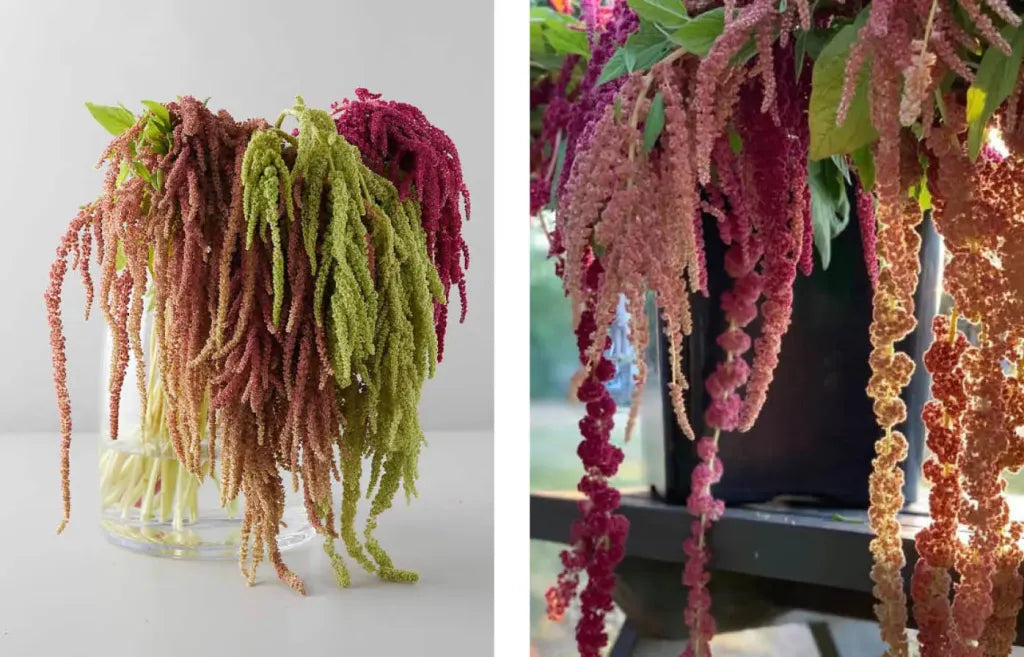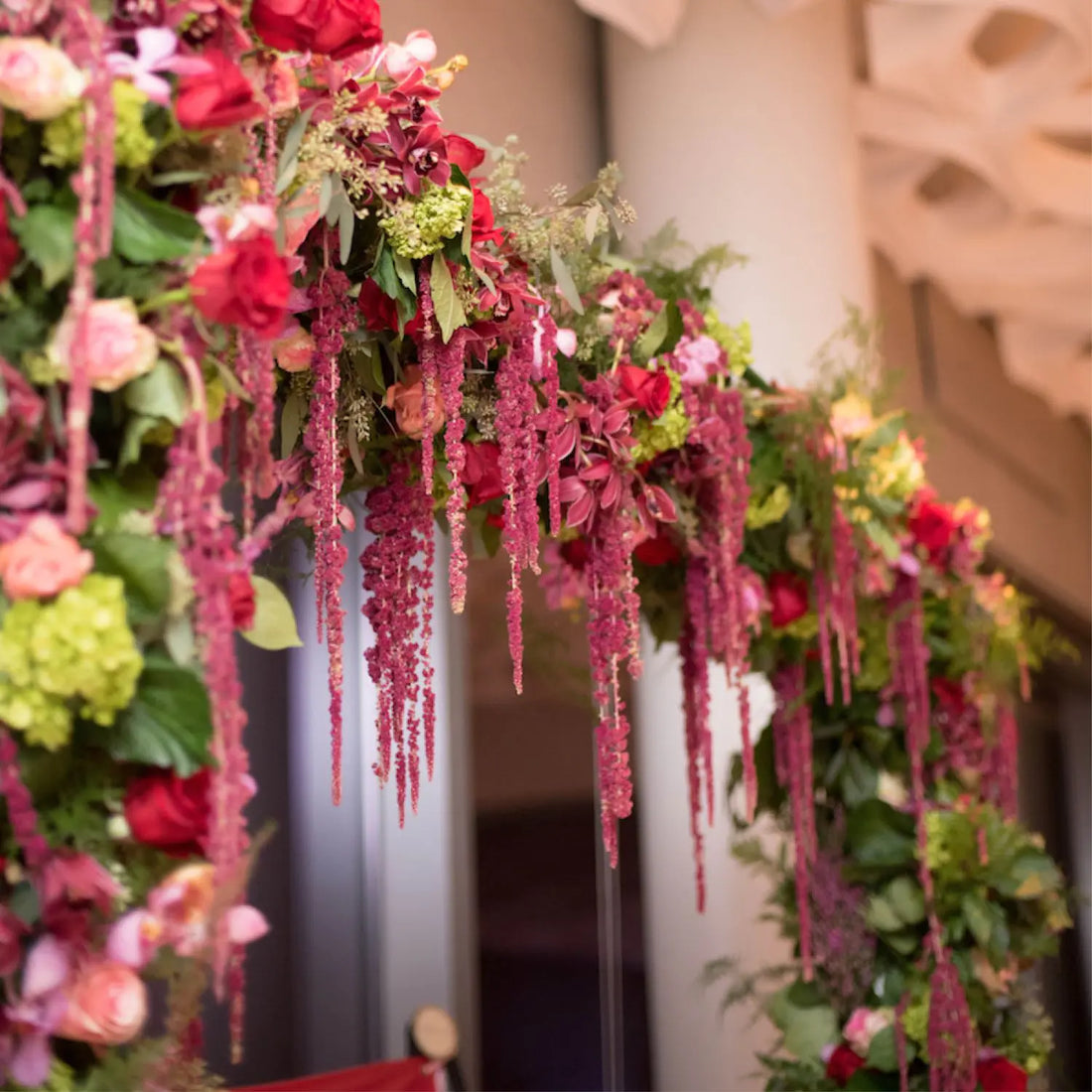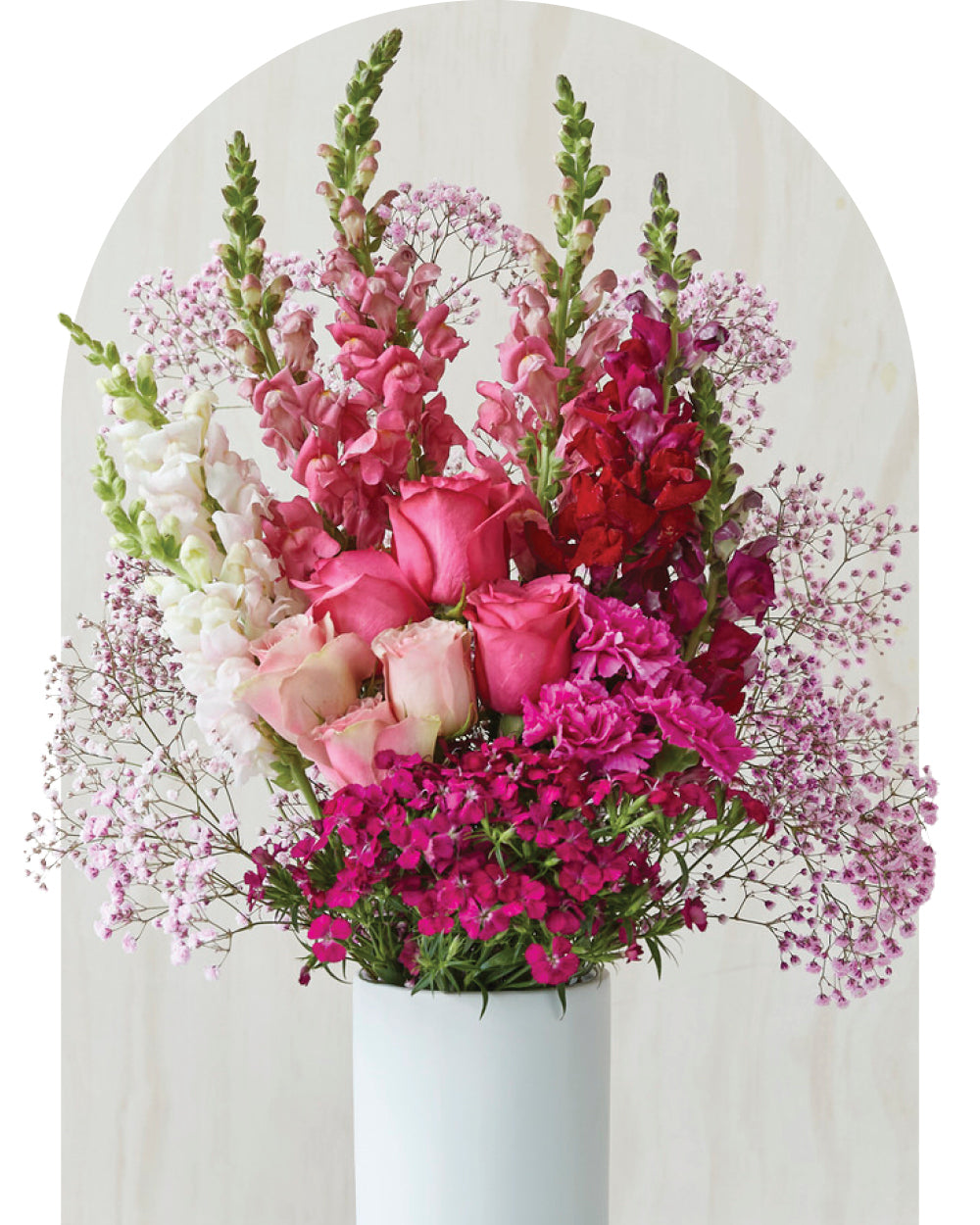This ancient flower is as beautiful as it is delicious. Growing to impressive heights, Amaranthus is well known for long densely packed flower-heads in bold splashes of colour. While Amaranth may be more famous for their delicious seeds, we think their flower’s unique look makes them a perfect choice for any bouquet or flowerbed.
Amaranth has been a key witness to major events throughout history, from the ancient Aztecs and Greeks, to manned space missions! With a past like that, we think it’s high time we all get to know Amaranthus a little better. So, buckle up, and get ready for some fun facts below.

Fun facts about Amaranthus
- The name Amaranthus comes from the Greek amárantos, meaning unfading flower.
- While Amaranth is cultivated all around the world, when you find Amaranth in the wild, it’s known by the less poetic name, Pigweed. This is due to the plant’s tendency to grow around pig fields.
- It’s actually found on every continent except Antarctica.
- Amaranthus isn’t just one flower, but the name for a whole family of plants. There are approximately 75 species of Amaranthus in total.
- Currently, the tallest Amaranth plant on record was measured at 27 feet and 10 inches in the Guinness Book of World Records! On average, they still grow to an impressive height – between 5 and 8 feet tall.
- The flowers are most commonly found in hues of red, ranging from maroon to crimson. However, the blooms can also be found in purple and gold.
- These vivid flowers bloom in the summer and autumn.

- A single Amaranth plant can produce up to 60,000 seeds in just one year.
- These seeds are considered a pseudo cereal and often called an ancient grain. But it’s not only the seeds that are edible…
- The leaves are also eaten on many of the species, and are often included in East Asian, African, and Caribbean cuisine.
- Amaranth has certainly earned its title of ancient grain. It was cultivated by the Aztecs, and it has been estimated that it was first domesticated 6,000 to 8,000 years ago. Incredibly, historians believe Amaranth may have made up 80% of their diet.
- But it doesn’t just stop at food! Amaranth also had cultural and religious significance to the Aztecs. Notably, during festivities for the Aztec god Huitzilopochtli, a statue of him was made out of Amaranth and honey, which they would cut into small pieces so everyone could eat a piece of the god.
- Unfortunately, when conquistadors arrived in South America, the Spanish outlawed these important traditions, many of which were lost to time.

- In North America, Native Americans used Amaranth to make dye. Hopi Red Dye Amaranth is a beautiful species named after the tribe of the same name, in honour of this practice.
- On the other side of the world, Amaranth was also important to the ancient Greeks. Garlands of Amaranth were used in the mourning of Achilles, plaited together to symbolise immortality.
- Amaranth is associated with longevity, death, and immortality due to their flowers being slow to wilt. Because of this, it has become a representation of unfading affection and everlasting love.
- It’s not all happy endings though, the species ‘Love-lies-bleeding’ is so named due to the flowers retaining their bright red colour after death. They are often said to symbolise hopeless love or hopelessness.
- Amaranth oil is also said to have medicinal benefits, ranging from treating eczema to improving your memory.
- In modern times, Amaranth is still a big figure in major events. It was taken on board the Space Shuttle Atlantis on its maiden voyage in 1985. It was mainly used for germination experiments in space, but also made for a tasty snack! Nasa chefs prepared Amaranth biscuits for the astronauts to take with them too!
The Amazing Amaranthus
Whether they’re lending their impressive height to your gardens, featuring on your dinner plate, or a fabulous last touch to your arrangement, we think Amaranth deserves to be your first choice. They make the perfect gift to show your everlasting love for your partner, to commiserate unrequited love, or just as a beautiful addition to your own home.
We hope we’ve convinced you that Amaranth are amazing… we certainly think so. Remember to get them when they come into bloom this summer. In the meantime, you can enjoy them year-round in many of our dried bouquets – check them out now!










